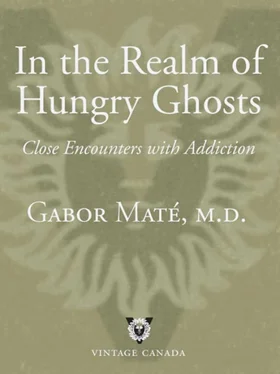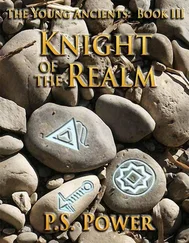At a recent meditation retreat, however, I had a breakthrough: I realized that my expectations for meditation practice had been too harsh—on myself. I wanted to be “good” at it, I wanted spiritually uplifting things to happen, I wanted deep insights to arise. I now know it’s a gentle process. One doesn’t have to be good at meditation, achieve anything or look for any particular result. As with any skill, only practice leads to improvement—and improvement is not even the point. The only point is the practice. What I have found is that when I do practise meditation, I find more ease in my life. I’m calmer, more emotionally present, more compassionate to others and far less reactive to external triggers. In other words, I’m more of a self-regulating adult and less prone to self-soothing, addictive behaviours.
Mindfulness practice will not by itself cool the addiction-heated mind, but, addicted or not, it is an invaluable adjunct to whatever else we do. It’s a way of working with the most immediate environment, the internal one. “Mindfulness changes the brain,” psychiatrist and brain researcher Daniel Siegel points out: “Why would the way you pay attention in the present moment change your brain? How we pay attention promotes neural plasticity, the change of neural connections in response to experience.” 16
Mindfulness can be practised throughout the day, not only on the meditation cushion. There are many techniques for this but they all come down to paying close attention to one’s experience of each moment, without seeking distraction. When I go for walks now, I no longer have earphones piping music into my head. I try to stay present to the physical, aural and visual sensations I experience, as well as noticing my mental processes and reactions. Sometimes I can keep this up for as long as thirty seconds at a time before my mind scurries off into La La Land. I call that progress.
CHAPTER 31

The Four Steps, Plus One
This chapter outlines a specific method that I view as promising for behavioural addictions—for example, shopping, gambling and eating compulsions—or for anyone wishing to disengage from maladaptive habits of thinking or acting. Its other value is that it sheds further light on the nature of the addicted brain and mind. These steps are not a comprehensive treatment for addiction, but can serve as an adjunct to Twelve-Step programs or to the approaches recommended in the preceding and following chapters. They will not work if done mechanically, but require regular practice with conscious awareness.
The ability of conscious attention to transform the automatic mind and its physiological substrates in the brain has been successfully applied at UCLA to the treatment of obsessive-compulsive disorder. As we have noted, OCD has a similarity to addiction in the driven nature of its behaviours. They are both impulse-control disorders. Deeper than that, they are both based in anxiety. The person with OCD believes that something catastrophic may happen if she doesn’t perform a particular activity a precise number of times and in a particular way. The addict’s behaviour or substance use is also meant to calm anxiety—an unease about life itself, or about a sense of insufficient self. And, we recall, OCD and addiction seem to share the phenomenon Dr. Jeffrey Schwartz has described as “brain lock”—the stuck neurological gears that cause thought to be acted out before the action can be stopped, because the brain’s transmission mechanism cannot be put into “neutral.” When the obsessive or addictive thought occurs, obsessive or addictive action follows. There are further parallels on the biochemical level, with disturbances in neurotransmitter systems involving serotonin, for example.
The method Dr. Schwartz and his colleagues have developed applies conscious attention in a systematic, four-step fashion. On brain scans they have shown that the locked circuitry of OCD undergoes a change after a relatively brief period of consistent and disciplined practice by obsessive-compulsive patients. The demonstrated “brain lock” opens up, and the person is freed from the nonsensical thoughts that formerly compelled her behaviour. Can the same four steps be applied to addiction? “I haven’t worked extensively with addictions,” Dr. Schwartz told me, “but given that addiction also involves problems with intrusive urges and repetitive behaviors, there is good reason to think that the four steps could be useful in its treatment.”
What follows, then, with Dr. Schwartz’s kind permission, is my adaptation of the four steps to the healing of addiction. *32There is no clinical evidence to support this specific application, but there are excellent theoretical grounds for anticipating its value. The method is consistent with traditional Twelve-Step approaches, although it is not intended to replace them. Addiction physicians elsewhere have also expressed interest in adapting this technique to their work. If a personal testimony is of interest, I’m glad to offer mine: it has made a difference for me.

The program devised at the UCLA School of Medicine for the treatment of OCD is formally called the Four-Step Self-Treatment Method. Needless to stay, it depends on a high level of motivation for its success. As I pointed out earlier, motivation is generally higher in the case of OCD, where, unlike in addiction, the patient’s experience of her symptoms is intrinsically unpleasant. For the substance or behaviour addict there is at least an initial promise of delight that flows from the activation of the brain’s incentive-motivation and attachment-reward circuits. The suffering is delayed, rather than immediate. There is no bypassing the first step suggested at the end of the previous chapter—that is, before we can usefully apply UCLA’s four steps, we have to take the First Step of acknowledging the full impact of the addiction, and we have to resolve to confront its power over our mind.
The Four-Step program is based on the perspective that makes the best sense of disorders like OCD and addiction: that they are rooted in malfunctioning brain circuits and in implicit stories and beliefs that do not match reality. That, as we have seen, is the core problem in addiction because the development of the brain and the mind was negatively affected by adverse early circumstances. The first two steps place the maladaptive behaviours in their proper context of brain dysfunction. The third directs the brain to a more positive focus. With the time and mental space granted by the first three, the fourth step then reminds the addict of what motivates her to get over her habit. To support that process, I’ve added a fifth step that I have found helpful.
The four steps should be practised daily at least once, but also whenever an addictive impulse pulls you so strongly that you are tempted to act it out. Find a place to sit and write—preferably a quiet place—but even a bus stop will do if that’s where you happen to be when the addictive urge arises. You’ll want to keep a journal of this process, so carrying a small notebook with you is an excellent aid.
A warning about possible pitfalls. I have a tendency, typical in ADD, of beginning projects with enthusiasm and a sense of commitment, only to abandon them after some lapse or failure. “I’ve tried that,” I’ll then say, “but it doesn’t work for me.” That attitude is also typical of self-recovery practices in addiction, since, by definition, addiction is characterized by relapses. I have to get that there is no “it” to work or not work. “It” doesn’t have to work. I am the one who has to work. And what is commitment? Commitment is sticking with something not because “it works” or because I enjoy it, but because I have an intention that overrides momentary feelings or opinions. So, too, with the Four-Step program. You don’t have to feel or believe that it’s working for you: you just have to do it and to understand that if you have lapsed, it doesn’t mean that you have failed. It’s an opportunity to begin anew.
Читать дальше














